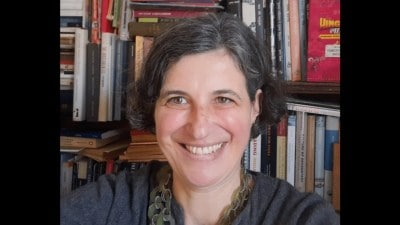When a team of strangers in Nepal moved a mountain to rescue a missing Indian climber
Rajasthan-based Anurag Maloo slipped into a crevasse below the 6,000 metres point between camp 3 and camp 2 while descending Mount Annapurna early on April 17.
 Anurag Maloo (L) and the team responsible for Maloo's rescue included Chhang Dawa Sherpa, Chhepal Sherpa, Lakpa Nurbu Sherpa, Dawa Nurbu Sherpa, Lakpa Sherpa, Tashi Sherpa, Captain Sobit Gauchan, and Polish mountaineers Adam Bielecki and Mariusz Hatala (R) (Source: File/Chhang Dawa Sherpa)
Anurag Maloo (L) and the team responsible for Maloo's rescue included Chhang Dawa Sherpa, Chhepal Sherpa, Lakpa Nurbu Sherpa, Dawa Nurbu Sherpa, Lakpa Sherpa, Tashi Sherpa, Captain Sobit Gauchan, and Polish mountaineers Adam Bielecki and Mariusz Hatala (R) (Source: File/Chhang Dawa Sherpa) It was a query that saved the mountaineer. The first time that Chhang Dawa Sherpa heard about Anurag Maloo — who fell into a crevasse below the 6,000 metres point between camp 3 and camp 2 while descending Mount Annapurna early on April 17 — the 41-year-old was busy on the phone with three helicopter companies to organise the rescue operations of various stranded mountaineers.
Earlier on April 17, Dawa had received the news that 56-year-old Noel Hanna, an Irish climber who had scaled Mount Everest 10 times, had died in his sleep overnight after successfully scaling Mount Annapurna. Dawa’s query on Maloo that afternoon in Pokhara would eventually lead to him spearheading what he called one of the “riskiest rescue efforts in the world” from a crevasse that is “the most dangerous point” along the route.
 The red dot in this image show the approximate point where Anurag Maloo fell into a crevasse, located below the 6,000 metres point between camp 3 and camp 2, while descending Mount Annapurna early on April 17. (Source: Chhang Dawa Sherpa)
The red dot in this image show the approximate point where Anurag Maloo fell into a crevasse, located below the 6,000 metres point between camp 3 and camp 2, while descending Mount Annapurna early on April 17. (Source: Chhang Dawa Sherpa)
Director of Kathmandu-based commercial adventure operator Seventh Summit Treks, Dawa was on his way to Kathmandu from Pokhara at that time. He immediately called his older brother Mingma, who was in Kathmandu that day, to return to Pokhara. A rescuer with a formidable experience of 27 years in search and rescue operations, Dawa was just 14 years old when he started his trekking journey as a porter under Mingma’s guidance. By the time he got involved in rescuing Maloo, Dawa’s efforts had bestowed a new lease of life on nearly 60 stranded climbers.
Dawa said, “Mingma (the head of the sibling-owned company) has scaled all 14 peaks that are 8,000 m and above in South Asia. I did it after him. Despite our combined experiences, rescuing Maloo remains our riskiest operation to date. When we decided to carry out the search mission, it was more out of a sense of duty than the hope of actually finding him alive.”
 The rescuers threw a loop down the 250-metre deep crevasse near the 6,000-metre point below camp 3 of Mount Annapurna after Anurag Maloo was spotted on April 20. Nearly 5 hours after the operation to rescue him started, he was finally extracted and placed in the chopper. Adam Bielecki (R) climbed down the 250-metre deep crevasse near the 6,000-metre point below camp 3 of Mount Annapurna after Anurag Maloo was spotted on April 20 (Source: Chhang Dawa Sherpa)
The rescuers threw a loop down the 250-metre deep crevasse near the 6,000-metre point below camp 3 of Mount Annapurna after Anurag Maloo was spotted on April 20. Nearly 5 hours after the operation to rescue him started, he was finally extracted and placed in the chopper. Adam Bielecki (R) climbed down the 250-metre deep crevasse near the 6,000-metre point below camp 3 of Mount Annapurna after Anurag Maloo was spotted on April 20 (Source: Chhang Dawa Sherpa)
“It was the afternoon of April 17 — I don’t remember the exact time — when I heard about Maloo going missing. I told my brother to rush back to Pokhara. We got to assembling a team to help us as well. We kept praying against sunny days. Clear days are extremely risky when it comes to rescue operations as they melt the snow, triggering an avalanche,” he added.
The rescue team
As Dawa got to assembling a team to rescue the Indian climber unknown to him, at camp 3, helicopter rescue pilot Sobit Gauchan was evacuating a stranded French climber and a Sherpa. Tired as he was from his rescue operation earlier that day, Captain Gauchan refused to turn down Dawa’s request for help to locate the missing Maloo. Meanwhile in India, 34-year-old Maloo’s brother Ashish — having received the news that his brother was missing — had packed his bags and was rushing from Kishangarh in Rajasthan’s Ajmer to Delhi. Ashish landed in Nepal the next morning, April 18.
Dawa said, “I asked Chhepal Sherpa (41), a daring and an experienced rescuer, to reach camp 3, while I rounded up the rescuers still around to join him in his search for Maloo.”
A team, including Lakpa Nurbu Sherpa, Dawa Nurbu Sherpa, Lakpa Sherpa, Tashi Sherpa, Captain Gauchan, and Polish mountaineers Adam Bielecki and Mariusz Hatala, reached camp 3 to start the rescue operation. The team let Ashish tag along.
“We (the rescue team) managed to rescue Indian climbers Baljeet Kaur and Arjun Vajpai, who were stuck at 7,300 m along with two Pakistanis at different camps, but were nowhere close to finding Maloo,” Dawa recalled.

Kaur, who had scaled the summit on April 17, had fallen ill on the way down. She reportedly spent a night on the mountain before being rescued the following day. In a post on social media, Pioneer Adventure, a Nepal-based mountaineering and expedition agency, said that Kaur, Vajpai and Pakistani climbers Shehroze Kashif and Naila Kiani were evacuated after they fell ill while descending from the summit.
Nepal Army Captain Suman Panday, who suffered from snow blindness at camp 3, was shifted to Kathmandu.
It was during these rescue operations that the team finally received its first solid lead from unidentified eyewitnesses on the coordinates of the crevasse that Maloo had fallen into. The day before he went missing, Maloo had spent the night at camp 4. His father Om Prakash said later that a health condition had forced his son to abandon the climb at 8091 m, just 291 m from the summit.
“While coming down, he slipped and fell in a crevasse between camp 3 and camp 2,” Prakash added.
The location of the crevasse — which was on an avalanche-prone stretch — was bad news for Dawa and team. Besides the one-in-a-kazillion chances of finding Maloo alive, getting anywhere close to spot itself would be an insurmountable challenge for the team.
“The day we rescued Kaur and the others was a clear one. Also, they were in relatively safe areas. But I was more worried about Maloo. An avalanche seemed like a real possibility with each passing moment,” Dawa added.
On April 19, the team planned a decisive mission to rescue Maloo the next day. The team — save for Captain Gauchan and Ashish, who spent the night in the nearby Dana with the chopper, a single-engine Airbus H125, and reported for the mission early next morning — reached camp 3 that evening and spent the night there. The next day, they made the final bid to rescue Maloo.
Maloo is found
April 20 dawned frigid and hazy. Probably a good sign for the rescue team since it meant a lower risk of an avalanche. At 5.52 am, Captain Gauchan and Ashish, who had taken off from Dana earlier, met with the others near the crevasse where Maloo had fallen. With no space to land the chopper, the arctic winds and brutal temperatures of -35 degrees Celsius — 35 times the freezing temperature of water — the rescuers had just one hour to locate Maloo, who had been missing for 68 hours now.
At 7.50 am, nearly 75 minutes into the search operation, Chhepal spotted hints of yellow buried inside a 250-metre deep fissure near the 6,000-metre point below camp 3. An elated Chhepal immediately used his walkie-talkie to pass on the good news to the equally ecstatic team. They would not have to abandon the search for Maloo now. But spotting him was just step one of the treacherous rescue operation, which was as simple as getting blood out of a stone.
Bielecki, one of the best climbers in the team, climbed down the crack. Once Maloo had been gingerly extracted from his snowy berth, the Polish climber carefully tied Maloo with a rope so that he could be lifted up. While the others worked to extract Maloo, Captain Gauchan kept the helicopter in a steady hover at a low height. He said a long rope was tied to the chopper by the team in case they needed to be evacuated due to an avalanche. Nearly five hours after the search operation began, Maloo was finally placed in the chopper around 10.45 am.
Dawa recalled, “At the time of his rescue, he had been lying in a literal deep freezer for 68 hours. There was no discernible movement or breathing, but we felt some kind of warmth in his body.”
Watch | When a team of strangers in Nepal moved a mountain to rescue the Indian climber Anurag Maloo pic.twitter.com/xIdWOeAsEJ
Despite the white-out and after three days of scouring Mount Annapurna — one of the highest and most difficult peaks to summit, along with K2 and Nanga Parbat — the rescue team had performed nothing short of a miracle.
Captain Gauchan said Maloo was flown to the base camp on the north side. Doctors from the Nepal Army assessed his condition and advised shifting him to the nearest hospital immediately.
“We flew him to the Manipal Teaching Hospital in Pokhara at noon,” said Dawa, who was present in the helicopter.
At the Pokhara hospital, barely 15 minutes by air, a team of doctors led by Dr Anup Subedee was on standby. There were no visible signs of life in Maloo at this point. After the helicopter landed, Maloo underwent a three-hour-long emergency treatment. Sources said efforts by doctors brought back a “semblance of rhythm” to his vital organs and some movement in his limbs.
A doctor from the hospital said, “He was not responding when he was brought here. There was no pupillary activity. He was not in a good condition. Considering his serious condition, we referred him to a Kathmandu hospital.”
Three hours after treatment at the Pokhara hospital, Maloo was on a Nepal Army aircraft and on his way to the Nepal Mediciti Hospital in Kathmandu valley. At this hospital too, a team led by Sanjay Karki, an emergency medicine and trauma specialist, was on standby for Maloo’s arrival.
A hospital source said, “He was put on ventilator support. We also examined him for internal damage.”
The elation over Maloo’s rescue was, however, eclipsed by signs of “gangrene” caused by frostbite. Things took a positive turn by April 23, as Maloo started responding positively to calls by doctors, which indicated “coordinated brain function”. The following day, Maloo showed “dramatic response” to treatment and the first evidence of his “coordinated brain activities” was detected. As the doctors called his name, he opened his eyes for the first time in days. The next day, doctors said, he seemed to be making some, albeit slow, progress. On Thursday, doctors said his consciousness level had improved. Besides an endoscopy revealing the presence of stress ulcers, they declared his condition as “relatively stable”.
At the time of his fall, Maloo was on a mission to climb all 14 peaks above 8,000 m. At the time of his rescue, Maloo had united strangers from across the world in a death-defying mission to get him home safe and sound.







